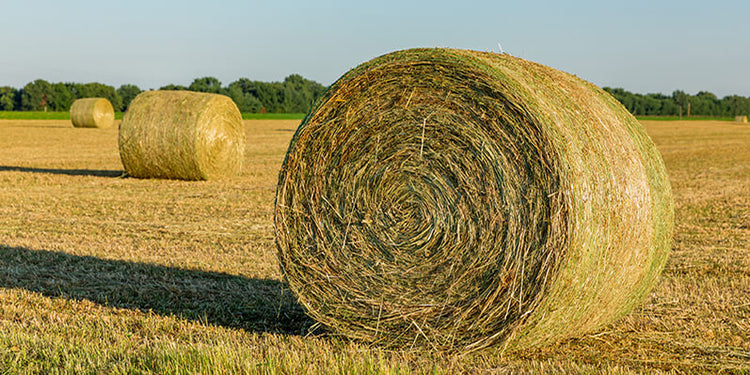How do you know which hay to feed to different groups of cattle? The nutritional content of forages will vary due to numerous factors. These factors include season, forage growth rates, animal stage of production, producer ability to supplement, and the list goes on from there.
Seasonality
In the United States, hay season usually spans from early summer to early fall, and farmers work tirelessly to get as many cuttings in as possible. Timing is key. Cut too early and overall yield for the year will be low. Cut too late and grass will have matured too much. As the plant matures, more structure is required to keep it standing tall, and the quicker it grows, the quicker fiber develops. As fiber content increases, protein decreases, and digestion becomes much more difficult. This knowledge often times brings producers to question, “How do I know which hay to feed to which groups of animals?” (learn more about the importance of fiber in Ruminant Nutrition here)
Animal Stage of Production and Requirements
First, it is important to determine animal stage of production and nutritional requirements. Nutritional requirements will vary throughout a lifetime, requiring more or less depending on the demands of the body. For a cow-calf operation, the title for the highest nutritional requirements belongs to the lactating cow, specifically during the early stages of lactation. On a stocker operation, lighter weight calves have greater requirements for structural growth in comparison to their heavier counterparts laying down fat.
Supplementation Rates
Once you have determined the nutritional requirements of each group, you can now look at how much hay they will need vs. how much they can physically consume. Those requiring the greatest amount of nutrients should be fed more nutrient-dense feed sources. This approach will allow lower feeding rates in order to reach nutritional needs.
In years when hay quality suffers, physical fill, or gut fill, becomes even more important to pay attention to. The rumen wall contains receptors called “Stretch Receptors”. When the rumen gets full, the walls will stretch and trigger stretch receptors to signal to the brain that it is full, and the cow will stop eating. If receptors are triggered prior to meeting nutritional requirements, loss of body condition can occur. In these cases, additional supplementation is required to enhance feed efficiency and utilization.
Ability To Supplement
The ability of supplementation can vary drastically depending on your location. For instance, a producer in Arkansas may have their herd within a few mile radius but a rancher in Montana may have their herd spread across hundreds of miles. Supplementation types and concentrations will vary drastically depending on how often you are able to provide it.
Supplementation will look different for every rancher and farmer, but whatever the program is, the development of a proper nutritional program is necessary for long term profitability.
How can AgriGro add to your long term profitability?
Nutri-Zyme® is an all-natural supplement designed for all farmers and ranchers. This prebiotic can be added directly to the feed daily or added to water sources for those who may not be able to feed every day. Nutri-Zyme® enhances gut health and digestive efficiency, allowing you to get the most out of your forages. Nutri-Zyme® contains additional magnesium, which is especially important to combat grass tetany during lush forage growth. Additionally, the supplemental zinc found in Nutri-Zyme® improves hoof integrity, which is especially important when cattle are required to walk long distances for food, water, or fresh forages.
*Don't forget to use FoliarBlend® and AgriCal® on your forage crops to improve hay quality and nutritional levels.* Watch video.
Contact a rep or click here to learn more about incorporating Nutri-Zyme® into your production.
 Order Now Contact a Representative
Order Now Contact a Representative


